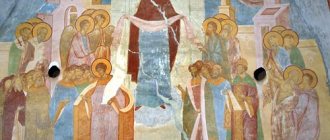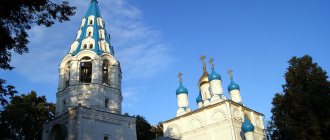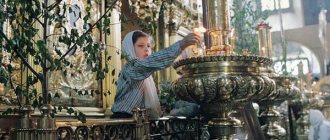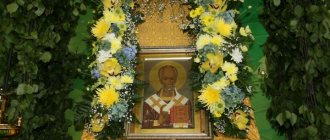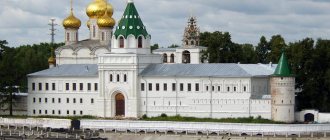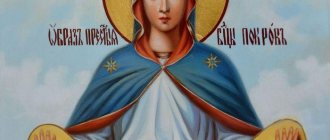August 28 - Assumption of the Blessed Virgin Mary
On August 28, 2021, Orthodox Christians celebrate one of the twelve main church holidays - the Dormition of the Blessed Virgin Mary.
UNIAN will tell you when the Dormition of the Theotokos is 2021, how it is celebrated, why pray at the icon of the Assumption of the Blessed Virgin Mary.
History of the Feast of the Dormition of the Blessed Virgin Mary
On August 28, the Orthodox Church commemorates the death (Assumption) of the Mother of God. But this holiday is not only sad because of the end of the life of the Mother of God, but also joyful - after all, she was reunited with her son Jesus Christ.
Three days before Mary’s death, the Archangel Gabriel appeared and informed her of her imminent death. On this day, the apostles left the places of their preaching and gathered in Jerusalem to say goodbye to the Most Holy Theotokos and to carry out the burial of her most pure body.
While around her bed, they were blinded by a bright light in which Christ himself appeared, surrounded by angels and archangels. At that moment, the pure soul of the Virgin Mary, without suffering, as if in a dream, went to the Lord.
The Apostle Thomas did not have time to attend the burial of the Mother of God, so after her Dormition he was allowed to enter the tomb-cave. But there he did not find the body of the Virgin Mary. This was explained by the fact that the Lord took Mary’s body to heaven.
The appearance of a sacred painting
The history of the creation of paintings depicting the Dormition of the Mother of God begins in the 9th century. This period is known in history as the time when the Christian Church managed to overcome heretical tendencies, defend the right to venerate icons and consolidate many important provisions. When the era of iconoclasm ended, the Feast of the Assumption was finally formed and began to be actively depicted by artists.
At first, the sacred paintings looked quite simple and concise. Early paintings were distinguished by their simplicity, the presence of a small number of figures and details. The very first images of the Assumption include relief compositions and book miniatures. Portable icons and temple paintings that appeared later allowed the masters to significantly enrich the religious plot, making it more expressive and rich.
In the 13th century. The iconography of the Assumption reached its peak development. During this period, the image was fully formed, which later became canonical. Since then, practically no changes have been made to it, with the exception of small details.
One of the most famous works is the composition of Theophanes the Greek, created around 1390. Such a painting, which is a double-sided canvas, later gave rise to the tradition of creating icons with images on both surfaces.
Dormition of the Blessed Virgin Mary: traditions
The Feast of the Dormition of the Virgin Mary coincides with the end of the strict Dormition Lent. On this day you can start eating a variety of foods, but only if August 28 does not fall on Wednesday or Friday. If this is the case, you should wait another day.
According to tradition, on this day believers go to church to honor the memory of the Blessed Virgin Mary and pray at her icon.
With the Assumption, the preparation of various supplies for the winter begins. From this day on, they began to collect mushrooms and nuts in the forests for the winter.
It was also a good tradition for our ancestors to pickle cabbage, cucumbers, tomatoes and other vegetables for the winter on the Dormition.
Description of the composition
Most of the icons of the Assumption have significant similarities with each other.
- The central part of the composition always depicts the Mother of God lying on her deathbed with a serene expression on her face and closed eyes, dressed in clothes of muted tones. Her body often looks a little ephemeral - this technique is used to emphasize the unearthly nature of the events taking place.
- At the head of the bier there are the apostles who appeared to bid farewell to the Mother of God. The painting always depicts John the Theologian, to whom Christ, being crucified on the cross, pointed to the Virgin Mary and said: “Behold your mother.” At the same time, the Savior implied spiritual kinship and veneration of the Mother of God as the closest person. Next to John is depicted Peter, fumigating the bed with incense. The painting also contains images of Luke, Bartholomew, Mark, and Matthew.
- Near the dying Mother of God the figures of Dionysius the Areopagite and Ignatius the God-Bearer are visible. These saints are present on most of the icons of the Assumption, since they are the ones who have written evidence of the great event.
- Behind the bed is Jesus Christ, holding in his hands a small figurine of a newborn with a halo. This detail symbolizes the purest soul of the Mother of God, for whom Her Son came. The Savior is often depicted in a blue sphere. Along with him in this symbol of the Heavenly Kingdom are visible cherubs.
All events take place in a room in which there are arches, columns, and windows. Sometimes the painting depicts a more modest interior - two pillars and a cloth hanging on them. In front of the bed there is often a burning candle, symbolizing the end of the earthly life of the Mother of God.
What do they pray for at the icon of the Dormition of the Blessed Virgin Mary?
The icon of the “Assumption of the Blessed Virgin Mary” is considered very powerful - in front of it they ask for the protection of children and adults from illnesses and the evil eye, for help in making the right decision, in complex problematic issues. Also, it is this image that helps you to walk your earthly path with dignity and overcome the fear of death.
The icon of the Dormition of the Blessed Virgin Mary is considered very strong / grekomania.ru
Before this image they pray for:
- her protection and patronage;
- cure for various ailments;
- eliminating the fear of death;
- strengthening the Christian faith.
History of the appearance of the image
The first thing that is important to know when talking about the icon of the Assumption is that it is quite late, and its canonical composition dates back to approximately the 9th century - the era when the Church overcame the main heresies and finally fixed the most important theological positions. It was in the times after iconoclasm that the feast of the Assumption itself and its reflection in Christian painting were finally formed.
Dormition of the Blessed Virgin Mary. Constantinople. Mosaic of Chora Monastery
Early images were, as a rule, laconic and small-figured. In the center of the composition is a bed covered with purple cloth, on which rests the most pure body of the Mother of God.
The apostles stand in front of the bed, their poses and gestures are sad and convey the general sorrow of the captured moment.
Behind the bed is the figure of Christ, who bends over the body of the Mother and holds Her holy soul in his hands (she is always depicted as a newborn baby wrapped in swaddling clothes).
Angels fly over the Savior and the Mother of God - heavenly witnesses of this glorious and sad moment.
This is how the Assumption was depicted in ancient times, unpretentiously and simply. An example of the first icons are flat relief images on thin plastics made of stone or ivory, as well as book miniatures - the sheer size of these products did not allow many elements to be applied to them. But temple paintings and portable icons almost immediately became a kind of space in which ancient masters could significantly enrich the previously formed composition.
Around the 13th century, the final plot of the icon was formed. Since then it has remained virtually unchanged. Perhaps in the West, secular artists tried to offer their own versions of the vision of the Assumption, but they did not take root in canonical icon painting, and to this day, both Orthodox and many Catholic churches are decorated with icons dating back to ancient prototypes of the 9th century. Let's look at the canonical image in more detail .
What prayers are read before the icon of the Assumption?
Orthodox Christians pray at the icon of the Dormition to receive help from the Most Pure Virgin with illnesses, mental anguish, injustice, and slander. Prayer to the Queen of Heaven through Her bright image gives strength in the fight against addictions, allows you to find a way out of complicated situations, resist the machinations of enemies, and receive protection for your home and family from evil people and dark magical spells. The Mother of God provides support to mothers who come to Her with requests for the well-being of their children and to guide them on the righteous path.
The icon of the Assumption is used by clergy to give farewell to the seriously ill and dying. Together with the reading of special prayers, it helps to cleanse the soul of a person who is preparing to soon leave the earthly world and enter the Kingdom of the Lord after the death of the physical body.
Additional details and meaning of the relic
Some versions of the icon contain images of two figures located in the lower part of the canvas, under the bed of the Blessed Virgin. Most often it is an angel with a sword and a person depicting a prayer gesture. They are mainly associated with an episode that occurred during the burial of the Queen of Heaven. The praying man is the same priest Athos who doubted the holiness of the Mother of God and intended to desecrate the funeral rite, for which he was punished by the heavenly messenger. In some compositions, his severed wrists are depicted hanging on the edge of the bed, and the Jewish priest himself stands away from the bed.
Orthodox Christians claim that the painting, dedicated to the events of the Dormition of the Virgin Mary, contains a very important truth about life and death for all believers. The shrine reminds us that physical death is not a final ending and a state of non-existence. What is depicted on the icon testifies that after the end of earthly life, a person continues to exist in the bright Heavenly world. It should be remembered that the path to it involves sorrow and possible persecution, but at the end of all suffering the believer will certainly find eternal bliss in the Kingdom of God, surrounded by the righteous, saints and archangels of the Lord.
Login to the site
Iconography of the Dormition of the Mother of God
History of the appearance of the image
The first thing that is important to know when talking about the icon of the Assumption is that it is quite late, and its canonical composition dates back to approximately the 9th century - the era when the Church overcame the main heresies and finally fixed the most important theological positions. It was in the times after iconoclasm that the feast of the Assumption itself and its reflection in Christian painting were finally formed.
Dormition of the Blessed Virgin Mary. Constantinople. Mosaic of Chora Monastery
Early images were, as a rule, laconic and small-figured.
In the center of the composition is a bed covered with purple cloth, on which rests the most pure body of the Mother of God.
The apostles stand in front of the bed, their poses and gestures are sad and convey the general sorrow of the captured moment.
Behind the bed is the figure of Christ, who bends over the body of the Mother and holds Her holy soul in his hands (she is always depicted as a newborn baby wrapped in swaddling clothes).
Angels fly over the Savior and the Mother of God - heavenly witnesses of this glorious and sad moment.
This is how the Assumption was depicted in ancient times, unpretentiously and simply.
An example of the first icons are flat relief images on thin plastics made of stone or ivory, as well as book miniatures - the sheer size of these products did not allow many elements to be applied to them. But temple paintings and portable icons almost immediately became a kind of space in which ancient masters could significantly enrich the previously formed composition.
Around the 13th century, the final plot of the icon was formed. Since then it has remained virtually unchanged. Perhaps in the West, secular artists tried to offer their own versions of the vision of the Assumption, but they did not take root in canonical icon painting, and to this day, both Orthodox and many Catholic churches are decorated with icons dating back to ancient prototypes of the 9th century. Let's look at the canonical image in more detail .
Event of the Assumption
The moment of the Virgin Mary's transition into Eternity is not described in the Gospel. The details of this event are known to us from Tradition and various apocryphal sources. Here's how it happened:
The Mother of God was warned by the Archangel Gabriel that in three days the Son would take Her to Himself. The Blessed Virgin was waiting for this news. She was ready to move into eternity, and used the allotted three days to say goodbye to all the people dear to Her heart.
It immediately became clear that She would not be able to see some - for example, the apostles who dispersed throughout the Roman Empire to preach. Three days were not enough to gather them all, and the Mother of God prayed to her Son for help.
The Lord answered the mother's prayers miraculously - angels were sent to all the regions where the apostles were, who carried them on clouds to Jerusalem to the house of the Most Pure One.
13th century, mosaic, Santa Maria Maggiore, Rome
The day of death has arrived. Mary lay peacefully on her bed, beaming with quiet joy. Her closest people gathered around her. Suddenly, the indescribable light of Divine glory shone in the upper room. Those to whom this vision was revealed were horrified.
They saw that the roof of the upper room was open, and Christ himself, surrounded by heavenly forces, was approaching his Mother. Her soul separated from her body and was taken into the arms of the Savior, who took Her with Him. And on the bed there remained a body that shone with grace, and it seemed as if the Mother of God had not died, but was lying in a peaceful midday slumber. A happy smile froze on Her face - finally, after many years of waiting, She went to her Son.
They buried the Mother of God in the tomb where Her parents Joachim and Anna, as well as Her husband Joseph, had previously rested. The body of the Virgin Mary was carried in a solemn procession through Jerusalem.
The Jewish high priests found out about this and decided to disperse the procession. But a miracle happened - the Christians who were seeing off the Mother of God on her last journey were surrounded by a cloud, and the soldiers sent by the high priests could not cause them any harm.
Then the Jewish priest Athos tried to overturn the bed, but his hands were cut off by an invisible force. Repenting of his insolence, he received a miraculous healing and confessed himself to be a Christian. After the burial, the apostles closed the entrance to the cave with a stone and left.
The Apostle Thomas did not participate in the procession - the Lord specifically allowed him to be late. He arrived in Jerusalem on the third day after the funeral. Saddened that he would never see the Virgin Mary again, he began to ask the apostles to give him the opportunity to say goodbye to his body.
They agreed, but when they opened the coffin, they were horrified: there was no body in the cave - only burial shrouds lay in the niche, from which a heavenly fragrance emanated. The apostles were in confusion. They returned home, perplexed and praying to God to show them where to look for the missing body.
That same day, in the evening, the Mother of God appeared to the apostles at a meal, surrounded by angels, and greeted them with the words: “Rejoice! For I am with you always."
How is the Assumption depicted in the icon?
Dormition of the Blessed Virgin Mary. Beginning of the 13th century, Novgorod. State Tretyakov Gallery, Moscow
On the icon, the masters were able to depict almost all the moments that are given in the story of the Assumption.
The task was not easy, but the icon painters coped with it brilliantly.
In the middle of the icon is a bed on which rests the body of the Blessed Virgin. As a rule, it is covered with a scarlet-colored fabric, and this is no coincidence: scarlet has always been an attribute of imperial power, and the use of this shade in the case of the Virgin Mary indicates Her royal dignity as the Lady and Queen of Heaven.
The same role is played by the purple sandals on the Virgin’s feet - only Byzantine emperors could wear such shoes.
In Europe, where they were accustomed to other attributes of royal power, Mary was sometimes depicted wearing a crown and with a scepter, but regardless of where the icon was painted, it always emphasized the idea that the Mother of God has an honor incomparably higher than that of the most powerful kings.
Dormition of the Blessed Virgin Mary. Ivory plaque. End of the 10th century Metropolitan Museum of Art, New York
The apostles sat around the bier. If we have a fresco or a large icon in front of us, then the number of upcoming figures is large, but if the field of the icon is small, then there are few upcoming figures.
But in any case, Peter and John are present in all images. Peter holds a censer in his hands and fumigates the bed of the Virgin Mary with incense. John simply mourns the Most Pure One, bending over the bed. Together with the apostles, you can sometimes see those people who in one way or another came into contact with the Mother of God. For example, John of Damascus, who glorified the Blessed Virgin in his writings.
Most often there is a candle in front of the bed, but the following composition also occurs: two severed wrists hang on the edge of the bed, and a man with crippled hands stands near the bed itself.
It is not difficult to guess that this is Athos, who tried to overturn the bed, but was stopped by an angelic sword. By the way, most often the angel himself stands near Athonia, raising his sword against the wicked blasphemer.
Nazariy Istomin. Dormition of the Blessed Virgin Mary. Russia. XVII century Moscow. Kolomenskoye Museum-Reserve
The Savior stands behind the bed. It is surrounded by a mandorla - a huge halo, symbolizing divine glory.
In His hands is a swaddled baby. This is the soul of the Blessed Virgin Mary. A very touching moment - once Mary held little Jesus in her arms, now He presses Her most pure soul to His chest.
Once She became the Mother of Her Creator, and now He lifts Her up to the heavenly palaces. Also, next to Christ there are many angels who form a sort of procession stretching from Earth to Heaven and greeting the King and Queen of the universe with rejoicing.
Some icons depict another interesting detail - the entire free field of the icon in its upper part is covered with clouds, on which you can see figures of people and angels.
In this unusual way, icon painters depict the apostles who were unable to arrive in Jerusalem on time, and were eventually miraculously delivered on clouds by angels.
Dormition of the Blessed Virgin Mary. Stavronikita Monastery. Athos (author: Feofan of Crete)
All the events depicted on the icon take place in the room - this is evidenced by the schematic silhouettes of columns, windows, arches, cornices and other architectural elements.
Sometimes, instead of a rich interior background, you can see just two pillars and a cloth hanging on them, stretched like a sail over the audience.
In any case, both the fabric and other elements may be symbols of both the enclosed space and the urban buildings of Jerusalem, through which the funeral procession passed.
Manuel Panselin. Fresco of the Cathedral of Protata in Karei. Athos. XIII century
In general, the icon of the Assumption reveals a very important truth - that death is not a dead end or a meaningless ending for a person, that a person does not cease to exist, but moves from the world below to the world above.
The lower part of the icon (filled with a sad atmosphere) echoes its upper part (full of heavenly glory and rejoicing), showing us all that the path to Heaven lies through sorrow, but at the end of this path Eternity awaits us - the same one where the first of people moved Most Pure Virgin Mary.
Other materials about the feast of the Dormition of the Blessed Virgin Mary on “Thomas”.
Double-sided tablets from St. Sofia in Novgorod
Dormition of the Blessed Virgin Mary. Serbia. Decani, XIV century
Dormition of the Virgin Mary. Fresco. XIV century. Chora Museum, Istanbul
Dormition of the Blessed Virgin Mary, selected saints in stamps. Byzantium. XV century
Dormition of the Blessed Virgin Mary. XV century Iconostasis of the Annunciation Cathedral of the Moscow Kremlin
Dormition of the Blessed Virgin Mary. Balkans. Macedonia. XVI century France. Paris. City Museum of Fine Arts
Dormition of the Blessed Virgin Mary. Belarus. XV century Moscow. Tretyakov Gallery
Dormition of the Blessed Virgin Mary. Byzantium, XV century.
Dormition of the Blessed Virgin Mary. Byzantium. XII century
Dormition of the Blessed Virgin Mary. Byzantium. XIV century
Dormition of the Blessed Virgin Mary. Byzantium. XV century Greece. Patmos, Monastery of St. John the Theologian
Dormition of the Blessed Virgin Mary. Byzantium. XV century
Dormition of the Blessed Virgin Mary. Greece. Athos, Hilandar monastery. XVII century
Dormition of the Blessed Virgin Mary. Greece. Cappadocia. XVIII century
Dormition of the Blessed Virgin Mary. Greece. XVII century USA. NY. Metropolitan Museum of Art
Dormition of the Blessed Virgin Mary. XVII century Armouries. Ascension Monastery of the Moscow Kremlin
Dormition of the Blessed Virgin Mary. Balkans. Serbia. Sopocany_ XIII century_ location Serbia. Novi Pazar. Sopočani Monastery
Dormition of the Blessed Virgin Mary. Novgorod. XIII century Moscow, State Tretyakov Gallery
Dormition of the Blessed Virgin Mary. Festive row of the iconostasis. 1425-1427 Holy Trinity Sergius Lavra, Trinity Cathedral
Dormition of the Blessed Virgin Mary. Russia. Rostov region XV century
Dormition of the Blessed Virgin Mary. Russia. North. XVI century SPb, State Russian Museum
Dormition of the Blessed Virgin Mary. Russia. XVI century Petrozavodsk. National Museum of the Republic of Karelia
Dormition of the Blessed Virgin Mary. Rostov. XVI century Kirillov. Kirillo-Belozersky Museum-Reserve
Dormition of the Blessed Virgin Mary. Tver, XV century. Moscow. Tretyakov Gallery
Dormition. Around 1392. Workshop of Theophanes the Greek. Back of the Don Icon of the Mother of God. Tretyakov Gallery
Dormition. XVII century
Assumption Cathedral of the Moscow Kremlin. OK. 1479
On the screensaver is a fragment of the icon of the Dormition of the Blessed Virgin Mary, 15th century. Novgorod. State Russian Museum, St. Petersburg
source


